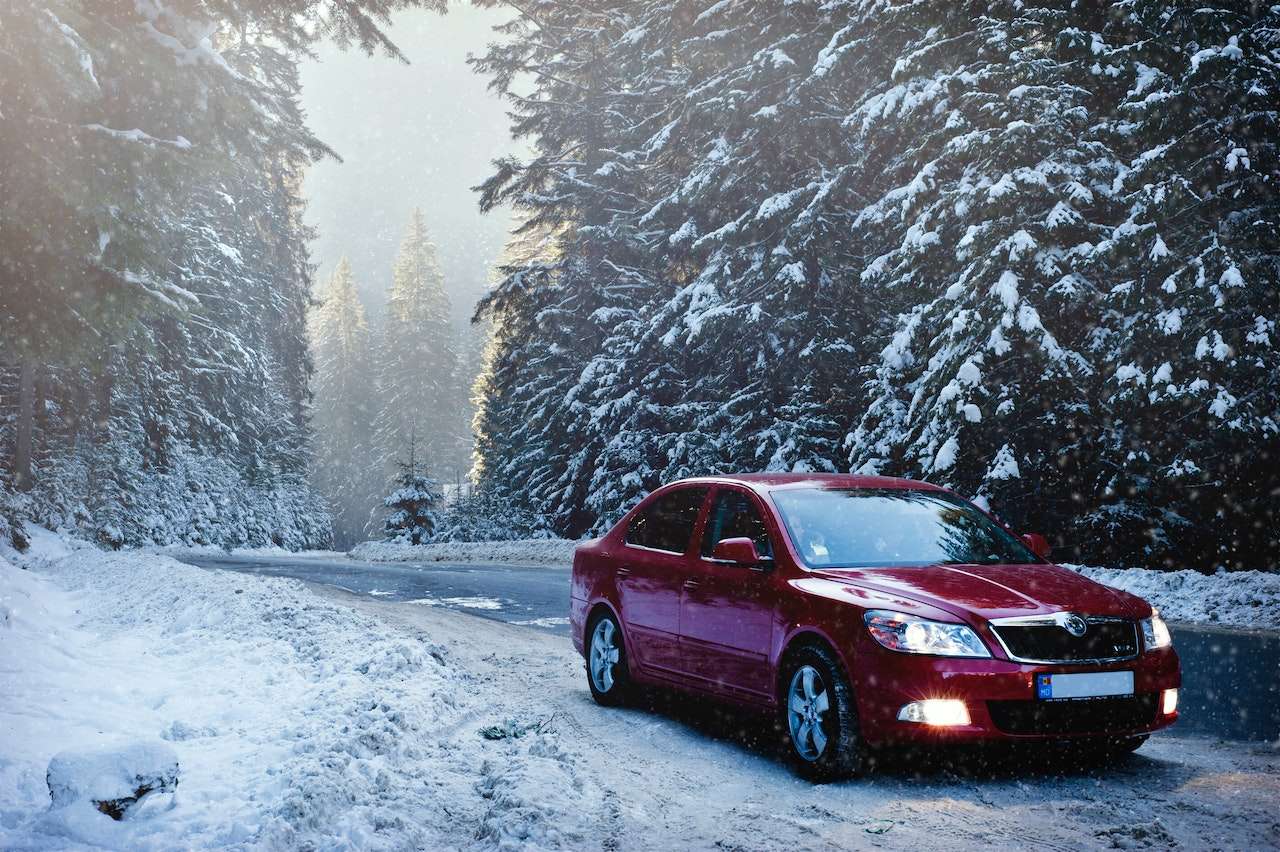To remove ice from a windshield, you can follow these steps:
- Start your car: Turn on the engine and allow it to warm up. This will help loosen the ice on the windshield.
- Use a scraper: Get an ice scraper or a windshield snow brush with a built-in scraper. Scrape the ice off the windshield using firm, but gentle, strokes. Start from the top and work your way down. Be careful not to apply excessive pressure, as it may damage the glass.
- Apply de-icer solution: If you have a de-icer solution or windshield washer fluid with antifreeze properties, spray it on the windshield. Let it sit for a minute or two to loosen the ice further.
- Use warm water (optional): Warm water can help melt the ice faster, but it’s important to note that using hot water can cause the windshield to crack due to sudden temperature changes. Use lukewarm water and pour it slowly over the ice. This method should be used with caution and as a last resort.
- Use a defrost setting: Turn on your car’s defrost setting, which blows warm air onto the windshield. This will help melt the remaining ice and prevent new ice from forming.
- Clean the wipers: If your windshield wipers are frozen to the glass, gently lift them away from the windshield and clear any ice or snow that may be preventing them from working properly.

Remember to be patient and take your time when removing ice from the windshield. Avoid using metal objects, such as a spatula or shovel, as they can scratch the glass. Additionally, never pour boiling water on a frozen windshield, as the extreme temperature difference can cause the glass to crack.
Car maintenance for icy conditions
It is crucial to ensure your vehicle’s safety and optimal performance. Here are some important tips:
- Check your tires: Make sure your tires have adequate tread depth for better traction on icy roads. Consider using winter tires or tire chains for added grip.
- Inspect your battery: Cold temperatures can strain your car’s battery. Have it tested to ensure it’s in good condition and replace it if necessary. Keep jumper cables or a portable battery booster in your vehicle in case of emergencies.
- Check your antifreeze/coolant: Ensure that your vehicle has the correct mixture of antifreeze and water to prevent the engine from freezing. Consult your car’s manual for the recommended ratio.
- Replace windshield wipers and fluid: Replace worn-out wiper blades with winter-specific ones that can handle ice and snow effectively. Fill up the windshield washer fluid reservoir with a winter formula that won’t freeze in low temperatures.
- Maintain proper lighting: Ensure all your car’s lights are clean and functioning properly. This includes headlights, taillights, brake lights, and turn signals. Clean snow and ice off the lights before driving.
- Keep your gas tank at least half full: Maintaining a higher fuel level helps prevent moisture from accumulating in the fuel lines and keeps you prepared for unexpected delays or emergencies.
- Prepare an emergency kit: Pack a winter emergency kit containing essentials such as a blanket, flashlight, extra warm clothing, ice scraper, shovel, sand or kitty litter for traction, reflective warning triangles, and non-perishable food items.
- Drive with caution: Reduce your speed and maintain a safe distance from other vehicles. Accelerate and decelerate slowly to avoid skidding. Use your brakes and accelerator gently. Be aware of black ice, which is often transparent and hard to see.
- Monitor weather conditions: Stay informed about weather forecasts and road conditions before embarking on a journey. Postpone non-essential trips if conditions are hazardous.
- Regular maintenance checks: Stay up-to-date with routine maintenance such as oil changes, brake inspections, and checking fluid levels. Cold weather can exacerbate existing issues, so proactive maintenance is crucial.

By following these car maintenance tips, you can help ensure your vehicle is prepared for icy conditions, minimizing the risk of accidents and breakdowns.
Car Maintenance For Icy Conditions
It is crucial to ensure your vehicle’s safety and optimal performance. Here are some important tips:
- Check your tires: Make sure your tires have adequate tread depth for better traction on icy roads. Consider using winter tires or tire chains for added grip.
- Inspect your battery: Cold temperatures can strain your car’s battery. Have it tested to ensure it’s in good condition and replace it if necessary. Keep jumper cables or a portable battery booster in your vehicle in case of emergencies.
- Check your antifreeze/coolant: Ensure that your vehicle has the correct mixture of antifreeze and water to prevent the engine from freezing. Consult your car’s manual for the recommended ratio.
- Replace windshield wipers and fluid: Replace worn-out wiper blades with winter-specific ones that can handle ice and snow effectively. Fill up the windshield washer fluid reservoir with a winter formula that won’t freeze in low temperatures.
- Maintain proper lighting: Ensure all your car’s lights are clean and functioning properly. This includes headlights, taillights, brake lights, and turn signals. Clean snow and ice off the lights before driving.
- Keep your gas tank at least half full: Maintaining a higher fuel level helps prevent moisture from accumulating in the fuel lines and keeps you prepared for unexpected delays or emergencies.
- Prepare an emergency kit: Pack a winter emergency kit containing essentials such as a blanket, flashlight, extra warm clothing, ice scraper, shovel, sand or kitty litter for traction, reflective warning triangles, and non-perishable food items.
- Drive with caution: Reduce your speed and maintain a safe distance from other vehicles. Accelerate and decelerate slowly to avoid skidding. Use your brakes and accelerator gently. Be aware of black ice, which is often transparent and hard to see.
- Monitor weather conditions: Stay informed about weather forecasts and road conditions before embarking on a journey. Postpone non-essential trips if conditions are hazardous.
- Regular maintenance checks: Stay up-to-date with routine maintenance such as oil changes, brake inspections, and checking fluid levels. Cold weather can exacerbate existing issues, so proactive maintenance is crucial.

By following these car maintenance tips, you can help ensure your vehicle is prepared for icy conditions, minimizing the risk of accidents and breakdowns.


0 Comments